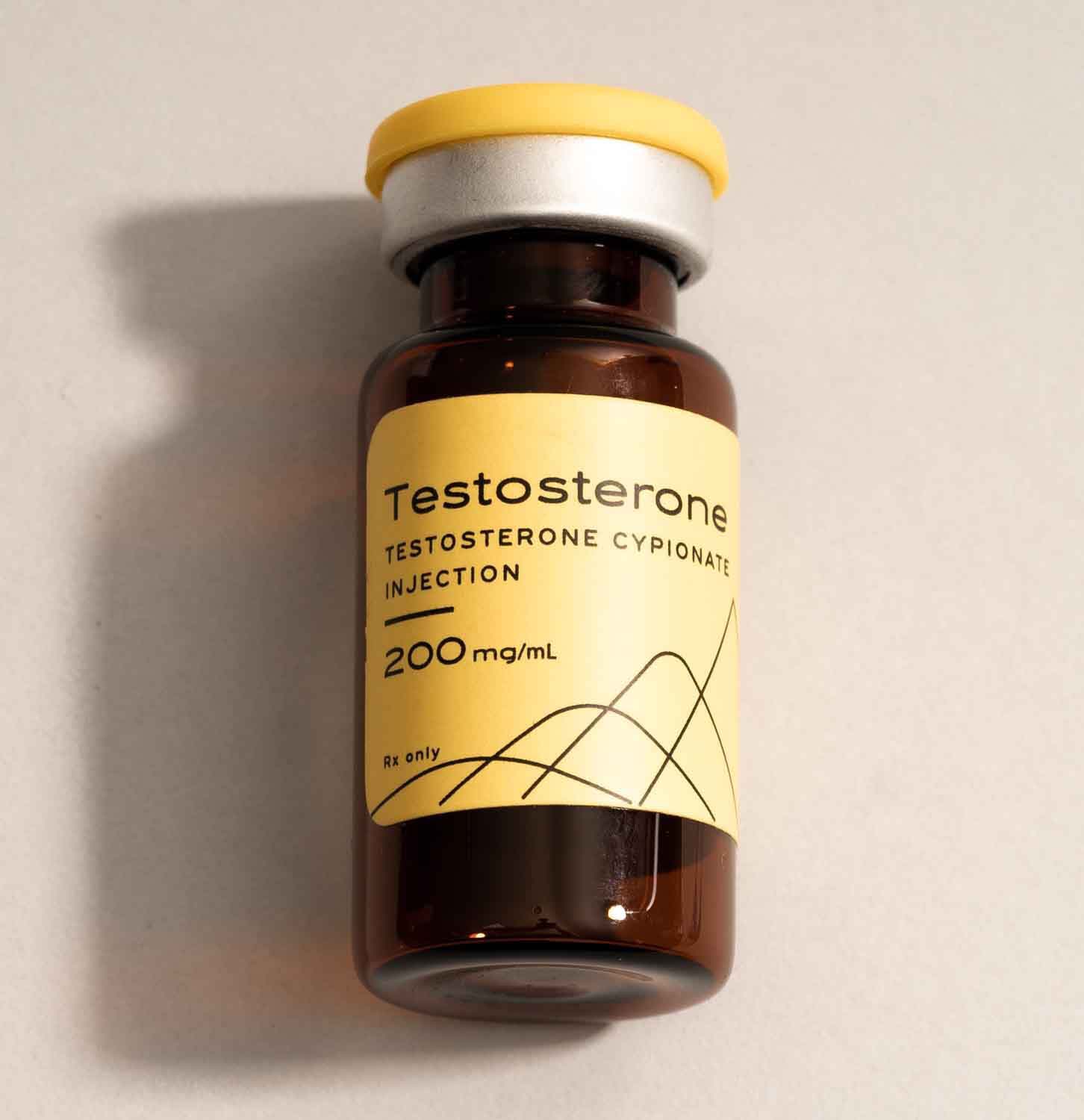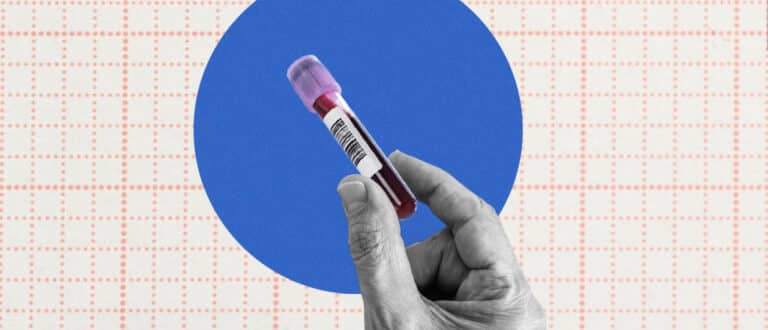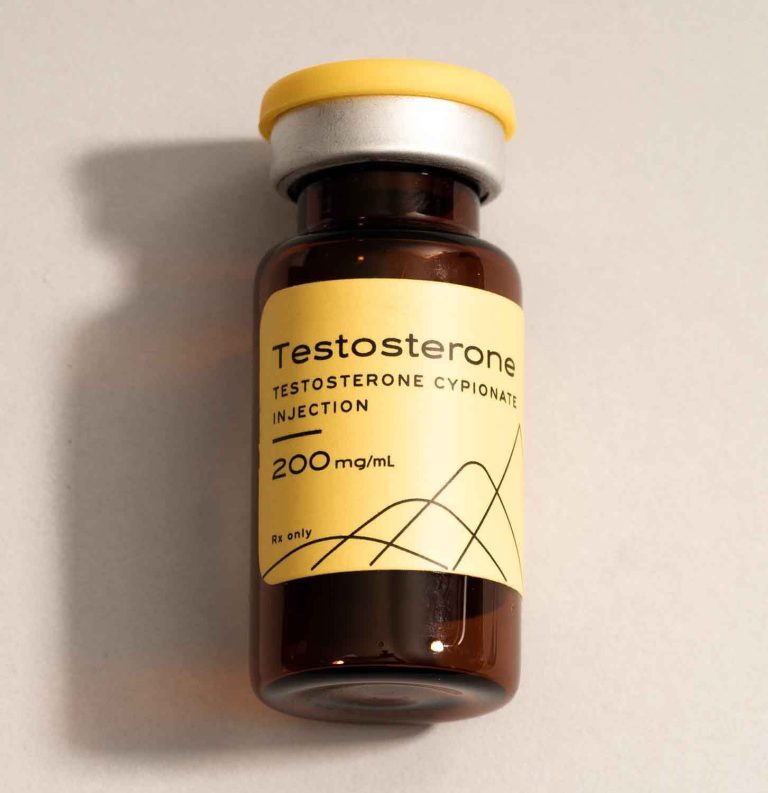Why Hone’s At-Home Testosterone Test Is the Best
A good testosterone test should be like a five-star Uber ride: safe, affordable, reliable, and comes right to your door.
Hone’s at-home testosterone test ticks all those boxes and then some.
Other popular testosterone home tests only measure free testosterone or total testosterone. Those are important numbers, but like an Uber driver without GPS, it’s only going to get you so far.
Hone’s at-home health test measures both total testosterone and free testosterone—plus seven other vital hormones and testosterone biomarkers. That makes it one of the most advanced testosterone tests on the market.
If Hone’s at-home testosterone test shows your T levels aren’t at a normal range for your age, our doctors will recommend a personalized treatment plan to help you feel like yourself again.
Here’s what makes Hone’s at-home testosterone test worth your time, money, and trust.
Hone’s at-home testosterone assessment is the simplest way to uncover whether your levels are low. If you qualify for treatment, TRT can be sent right to your door.
Checking T Levels With an At-Home Testosterone Test
Checking your testosterone, not to mention other hormone levels, has become easier than ever.
You can get a blood test from your doctor, and it will be thorough and accurate. But making an appointment, taking time off work and traveling to the doctor’s office for lab tests can be…well, a real time-suck. Those who live in well-populated, metropolitan locations can get stuck in traffic; men in more rural areas may have to travel to find a good provider.
Testing your T at home, on the other hand, can be a considerable time-saver, provided the test is reliable.
That begs one to ask the question, “Are at-home test results reliable?” Thankfully, at least when it comes to Hone, the answer is yes.
A slew of at-home testosterone tests exist on the market today. With so many options now available, it’s perfectly understandable to wonder which T test is the best. Here’s why the answer is Hone’s.
Why Our Testosterone Test is Different
Not all at-home testosterone tests are created equal. Many of today’s at-home tests measure your testosterone levels through a saliva sample. Hone follows the more accurate method of testing your T, by testing your blood.
Saliva tests are easy to use but truth is, they’re just not as reliable as blood tests for testosterone. Here’s why:
- They’re less accurate. A 2020 study (3) reported that saliva tests are less expedient and less efficient than blood tests at accurately tracking hormone level changes.
- Your reference levels aren’t reproducible. Each saliva test you take is bound to achieve a different result.
- Saliva testing can’t measure total testosterone levels. According to a 2014 study (4), saliva testing measured consistently lower total hormone levels than those measured by blood serum testing.
Let’s pause on that last one. Many at-home testosterone tests only measure free T. That means you’re only getting part of the picture about your health and wellness.
What Hone’s At-Home Testosterone Test Measures
As we’ve already established, many testosterone tests only measure free T. Hone’s comprehensive at-home testosterone test assesses a wide range of biological markers, or biomarkers, that are pivotal to maintaining normal levels of testosterone, including:
Total testosterone
Testosterone is commonly thought of as the primary “male hormone.” Total T is the complete amount of testosterone produced by the testes. The bulk of this testosterone is bound to albumin or sex hormone binding globulin (SHBG) and shuttled throughout your body.
Bound T isn’t “active.” In other words, it doesn’t impact your body in and of itself. Instead, it’s metabolized into other substances that are used in other bodily processes.
Around 98 percent of the testosterone in your body is this type of testosterone.
Free testosterone
Free testosterone is the remaining testosterone that isn’t bound to a protein.
Free T is the type of T your body uses; it’s vital to your health. The more you have of it, the better.
Luteinizing hormone (LH)
Produced by your pituitary gland, LH triggers the testes to make testosterone, which is important for producing sperm.
Estradiol
Yup, men need estrogen too. In fact, it’s critical for men’s health. Estradiol is a form of estrogen that modulates your libido, erectile function, and sperm production.
Sex-hormone binding globulin (SHBG)
This protein, produced in the liver, binds to estrogen, dihydrotestosterone (DHT), and testosterone, then transports them in the blood.
Albumin
Albumin accounts for about 60 percent of the total protein in your blood. It transports hormones, vitamins, and nutrients throughout your body.
Checking your albumin level can help determine how much testosterone your body actually has access to.
Alanine aminotransferase (ALT)
ALT is an enzyme that converts food into energy. If your liver is damaged, you’ll have more ALT in your blood.
What’s the connection to T? Low levels of testosterone are associated with suspected non-alcoholic fatty liver disease (NAFLD).
Aspartate transaminase (AST)
This enzyme is also found in the liver, heart, kidney, red blood cells, and skeletal tissue. It is released whenever muscle or liver damage occurs.
A high level of AST can indicate liver damage that may be connected to low T.
What Comes in Hone’s At-Home Testosterone Test
Hone provides all the materials you need to collect your sample, including:
- Safety lancets (4)
- Alcohol prep pads (2)
- Gauze pads (2)
- Band-aids (2)
- Blood sample collection card (1)
- Blood sample return bag (1)
- Prepaid return envelope (1)
- Biowaste disposal bag (1)
- Getting Started card (1)
- Collection instructions (1)
- Collection card template (1)
Hone’s at-home testosterone assessment is the simplest way to uncover whether your levels are low. If you qualify for treatment, TRT can be sent right to your door.
When You Get Your Testosterone Test
When your test arrives in the mail, read the instructions carefully. If you follow them, Hone’s test is extremely reliable, and its results accurate.
You’ll collect your sample (a simple finger prick!), then package everything up into a prepaid return envelope and send it to one of our affiliated, certified laboratories.
A few things you need to pay special attention to:
- Fast 10 to 12 hours before testing. You can drink as much water as you wish while you fast, and being at home means you can enjoy a meal as soon as you’ve collected your sample.
- Complete your test no later than 10 a.m. Your testosterone levels peak between the hours of 7 and 10 a.m., then steadily decline throughout the day. Testing during morning hours helps ensure that your test provides as accurate a measurement of your hormone levels as possible.
- Collecting your sample carefully. You’ll need a little patience and a lot of attention. If your sample seeps past the designated marking on the card, or you have trouble providing enough blood, it can compromise the accuracy of your test results.
- Let the blood on your collection card fully dry for at least an hour before placing it in the return bag and mailing it to the lab.
What kind of lab does Hone use for analysis?
Hone doesn’t use just any laboratory – these labs are accredited by the Clinical Laboratory Improvement Amendments (CLIA) and, where applicable, by the College of American Pathologists (CAP) to ensure the highest quality test results.
CLIA are a set of federal standards overseen by the U.S. Food and Drug Administration (FDA), the Centers for Disease Control and Prevention (CDC), and the Centers for Medicare and Medicaid Services (CMS). In regulating laboratory testing, CLIA requirements mandate that clinical labs obtain certification from the CMS before they can accept human samples for diagnostic testing.
CAP operates in a similar manner, though their laboratory standards not only meet, but often exceed CLIA requirements.
Oh, and let’s not forget that your test results are also physician reviewed. When you order a Hone at-home testosterone test, your order includes a virtual, face-to-face consultation with a certified physician.
These doctors are licensed in your home state, and they specialize in endocrinology, urology, internal medicine and hormone optimization. Once you receive your results from the CLIA-certified lab, you’ll schedule your consultation with the doctor, who will be able to go over them with you and make recommendations regarding treatment.
Hone’s at-home testosterone test takes the uncertainty out of measuring your hormones.
Getting Your Results
When you get your test in the mail, register it using the secure patient portal on Hone’s website. The portal gives you exclusive access to all records, tests and consultations with your Hone physician. That includes the results from the sample you collected.
After you take your sample, mail it to the lab using the special packaging included. They usually receive it within 48 hours.
Your test results are typically available within three to five business days after they receive your sample.
What If My Testosterone is Low?
If your test results show your testosterone levels are clinically deficient—meaning well below normal levels—your Hone physician will review the results with you, tell you what the levels mean, discuss how you’re feeling and recommend treatment.
The doctor may suggest changing up your diet, getting more exercise and sleep, or taking supplements.
But if your numbers are too low, the doctor is likely to recommend hormone replacement therapy (HRT).
If the doctor recommends HRT, they’ll want to confirm your T levels with a second at-home testosterone test, or you can go to Quest if you prefer.
If the secondary results confirm the original diagnosis and recommended treatment, the doctor will document and issue a valid, current, electronic prescription for treatment. It’s always smart to share this information with your regular healthcare provider.
What If My Testosterone is High?
If your test results show your testosterone elevated beyond what’s clinically considered to be within normal levels, it means that your brain is likely telling your pituitary gland to decrease testosterone production.
This can, and does, happen on occasion. Symptoms of high T can include:
- Headaches
- Inordinate growth of body hair, or hirsutism
- Low sperm count
- Impotence
- Shrinkage of testicles
- Enlarged prostate, urinary issues
- Unexpected changes in blood pressure
- Obstructive sleep apnea (OSA)
If your levels come back too high, your Hone physician will recommend further testing and some lifestyle changes to help bring down your testosterone.
If additional testing confirms the first result, your doctor will discuss next steps, which might include medication to lower your T levels.
High testosterone can be just as dangerous as low testosterone—if left untreated, it could increase your risk for heart or liver disease, so it’s important to get it treated.
Why Order an At-Home Testosterone Test?
Testosterone is an important hormone. It helps regulate your sex drive, muscle mass, bone density, cognitive function, energy, stamina, mood, and more.
When you hit puberty, your body ramped up testosterone production and you sprouted body hair, grew muscle, and thought non-stop about sex.
In your 20s, your testosterone levels peaked. By your mid-30s, T naturally starts to decline at a rate of about 1 percent per year (1). If the decline is significantly steeper, you can develop physical, mental, and emotional symptoms.
A lot of men resign themselves to the belief that it’s all a part of growing older. The truth is, they’re exhibiting the symptoms of hypogonadism, more commonly referred to as testosterone deficiency, low testosterone or Low T. And it can be very treatable.
How Do I Know If I Have Low Testosterone?
Low T is sneaky. At first, you might think you’re just a little run-down. Plus, symptoms can vary from guy to guy and can be easy to overlook if you don’t know what you’re looking for. But here’s what you might notice and feel if you have low testosterone levels:
Symptoms of Low Testosterone
- Weight gain, especially around your belly or breasts
- Decreased muscle, strength, and stamina
- Low sex drive
- A lack of energy and enthusiasm
- An inability to concentrate or think clearly (aka “brain fog”)
- Loss or thinning of body and facial hair
- Trouble sleeping, or feeling constantly tired
- Increasing feelings of sadness, moodiness, irritability
- Erectile dysfunction
If you’re experiencing these symptoms, it’s important to test your hormone levels to confirm any suspicion of clinically significant hormone deficiencies.
What is Normal Testosterone for My Age?
That’s a tough question. Age is one factor, but when determining what’s normal for you, you need to factor in underlying medical conditions and genetics.
The American Urological Association (AUA) guidelines note that adult men with symptoms of low T and a total testosterone level of 300 ng/dL or less (2) are clinically deficient.
If you even suspect low T, it’s worth getting your hormones assessed with an at-home testosterone assessment and, if your T levels are low, talking to a doctor about possible treatment options.
Hone’s at-home testosterone assessment is the simplest way to uncover whether your levels are low. If you qualify for treatment, TRT can be sent right to your door.
FAQ
When will I receive my at-home testosterone test?
Once you’ve ordered your test and the order has been processed, we’ll email you a link to track your shipment.
Our tests are shipped only on weekdays, and any orders placed after 3 p.m. EST will ship the next business day.
How much does your testosterone test cost?
Hone’s at-home test is arguably the most affordable on the market. Our test, normally $60, is currently available for $45.
That cost includes the shipping of our test and its contents, plus a virtual consultation with a Hone physician (which, on its own, can normally run an additional $50).
Is Hone’s testosterone test covered by my insurance? Do you accept HSA/FSA card payments?
Our at-home testosterone test and services are not covered by insurance.
Often, insurance won’t cover such services, and in those few instances that they might, you’ll find that our prices are likely comparable, if not actually lower, than your copay.
Also consider the fact that your test, consultations and prescriptions are all taken care of from the comfort of your home; there’s no travel required on your part, saving you both time and money.
Hone does accept Health Savings Account (HSA) and Flexible Spending Account (FSA) card payments. That can add up to being a huge, pre-taxed advantage that keeps your out-of-pocket expenses to a minimum.
Can I speak with a medical professional before ordering your test?
We’re here to help you, and we’re always happy to connect you with a medical professional. Please email support@honehealth.com to inquire.
Should I stop taking any medications or supplements before taking my test?
We do not recommend you discontinue any medication until you’ve first contacted your physician. If you have any questions regarding a specific medication, please email support@honehealth.com and we’ll gladly answer.
What time should I test my blood?
It’s very important that you collect your sample no later than 10 a.m., before your levels gradually decline throughout the rest of the day.
This should also provide ample time for your sample to completely dry before you package and mail your collection to our labs.
What if I have trouble drawing blood from my finger for the test?
Here are a few ideas to help you increase blood flow and produce enough of a sample to satisfy lab requirements:
- Drink plenty of water before collecting your sample.
- Warm hands produce better blood flow. Before you do your test, rinse your hands or shower in warm water.
- Promote adequate blood flow by swinging your arms by your side or running in place a few minutes before collecting your sample.
- The best spot for your lancet puncture is just off the center of the finger pad, which is the fleshy underside of the end of the finger—not the tip.
- Use the safety lancet while keeping your finger against a firm surface. This helps you achieve the proper depth when depressing the lancet.
- If a drop of blood doesn’t form after puncturing, gently massage your wrist down to the fingertip.
- If you’re still having difficulty, use another lancet on a different finger.
- If you’re unsure whether or not you’ve accurately collected your sample, we’re happy to review a photo of your sample on the card. You can email the photo at support@honehealth.com.
Can I still order a test if I’m already taking testosterone?
Yes! Once your Hone lab results are available and you schedule a consultation with a one of our doctors, we encourage you to provide a copy of blood work that shows your pre-TRT levels, meaning your original levels before undergoing any hormone treatment.
This way, the doctor can make the necessary comparisons and determine how well your current treatment is working.
If you’ve been taking testosterone in the form of a cream or gel, their oily residue will remain on your hands and can compromise your lab results. We recommend that you go to a local laboratory, like LabCorp, to have your total and free testosterone levels drawn through your arm rather than through your finger.
Forward those lab results to Hone with a photo of the prescription cream or gel you’re using.
Why are two tests needed?
If your Hone doctor makes a recommendation for testosterone replacement therapy (TRT), you’ll need to do confirmatory testing to verify the first test result.
If the second test results confirm the same or very similar findings, you will be prescribed treatment as outlined by your doctor.
Testosterone is a controlled substance so it’s imperative that you and Hone adhere to these strict guidelines.
Are there regular follow-up tests?
Yes. You’ll retest your hormones and follow-up with your Hone doctor after 90, 180 and 360 days. Failure to comply with either of these requirements can result in delayed shipment of your medication.
Hone will notify you well in advance when it is nearly time for you to retest and reschedule your follow-up appointments.
Do you ship to all 50 states?
At this time, in compliance with individual state regulations, Hone’s services are only available in 36 states.
But we’re rapidly growing and adding new states all the time.
If you try to order a test on the Hone website in a state we currently don’t service, input your email. As soon as Hone does expand to cover your state, you’ll get an email notifying you that our services are available.
Why Hone’s Testosterone Test K is the Best
- You can take your test in the privacy and comfort of your own home.
- Our test is extremely reliable, affordable, and its results are accurate.
- Hone’s test uses blood, not saliva. Blood tests can help doctors evaluate how well your hormones and other bodily functions are working, or diagnose other conditions before symptoms start to develop.
- Hone measures 8 biomarkers to get a complete picture of your hormone health
- Follow-up blood testing helps you and your doctor to monitor the progress of your treatment and make adjustments to your dosage as necessary.
References
1.Leen Antonio, et al (2016). The European Male Ageing Study Study Group, Low Free Testosterone Is Associated with Hypogonadal Signs and Symptoms in Men with Normal Total Testosterone
2. Mulhall JP, et al (2018) Evaluation and Management of Testosterone Deficiency.
3. Adebero T, et al (2020). Salivary and Serum Concentrations of Cortisol and Testosterone at Rest and in Response to Intense Exercise in Boys Versus Men.
4. Kozloski MJ, et al (2014). The utility and dynamics of salivary sex hormone measurements in the National Social Life, Health, and Aging Project, Wave 2.




















